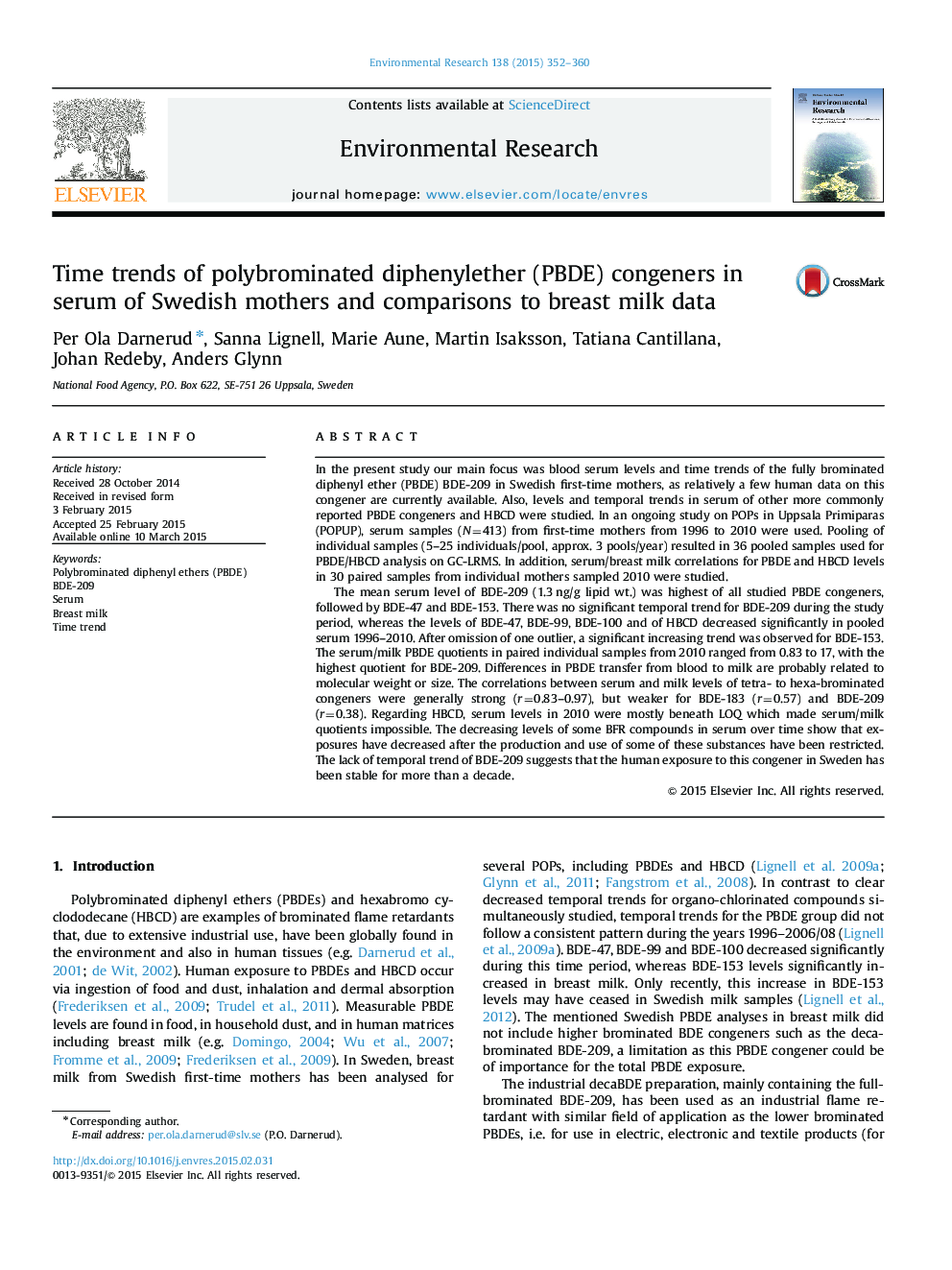| کد مقاله | کد نشریه | سال انتشار | مقاله انگلیسی | نسخه تمام متن |
|---|---|---|---|---|
| 4469785 | 1622563 | 2015 | 9 صفحه PDF | دانلود رایگان |

• Pooled serum samples from Swedish mothers (1996–2010) were analysed for PBDEs.
• Highest mean serum level of BDE-209 (1.3 ng/g lipid), then BDE-47 and BDE-153.
• Time trend decreased for BDE-47, -99, -100; increased for BDE-153; no trend for BDE-209.
• Good association between levels in serum and in breast milk (2010 year's samples).
• Increased serum/breast milk ratio favours serum analyses of high-brominated BDEs.
In the present study our main focus was blood serum levels and time trends of the fully brominated diphenyl ether (PBDE) BDE-209 in Swedish first-time mothers, as relatively a few human data on this congener are currently available. Also, levels and temporal trends in serum of other more commonly reported PBDE congeners and HBCD were studied. In an ongoing study on POPs in Uppsala Primiparas (POPUP), serum samples (N=413) from first-time mothers from 1996 to 2010 were used. Pooling of individual samples (5–25 individuals/pool, approx. 3 pools/year) resulted in 36 pooled samples used for PBDE/HBCD analysis on GC-LRMS. In addition, serum/breast milk correlations for PBDE and HBCD levels in 30 paired samples from individual mothers sampled 2010 were studied.The mean serum level of BDE-209 (1.3 ng/g lipid wt.) was highest of all studied PBDE congeners, followed by BDE-47 and BDE-153. There was no significant temporal trend for BDE-209 during the study period, whereas the levels of BDE-47, BDE-99, BDE-100 and of HBCD decreased significantly in pooled serum 1996–2010. After omission of one outlier, a significant increasing trend was observed for BDE-153. The serum/milk PBDE quotients in paired individual samples from 2010 ranged from 0.83 to 17, with the highest quotient for BDE-209. Differences in PBDE transfer from blood to milk are probably related to molecular weight or size. The correlations between serum and milk levels of tetra- to hexa-brominated congeners were generally strong (r=0.83–0.97), but weaker for BDE-183 (r=0.57) and BDE-209 (r=0.38). Regarding HBCD, serum levels in 2010 were mostly beneath LOQ which made serum/milk quotients impossible. The decreasing levels of some BFR compounds in serum over time show that exposures have decreased after the production and use of some of these substances have been restricted. The lack of temporal trend of BDE-209 suggests that the human exposure to this congener in Sweden has been stable for more than a decade.
Journal: Environmental Research - Volume 138, April 2015, Pages 352–360